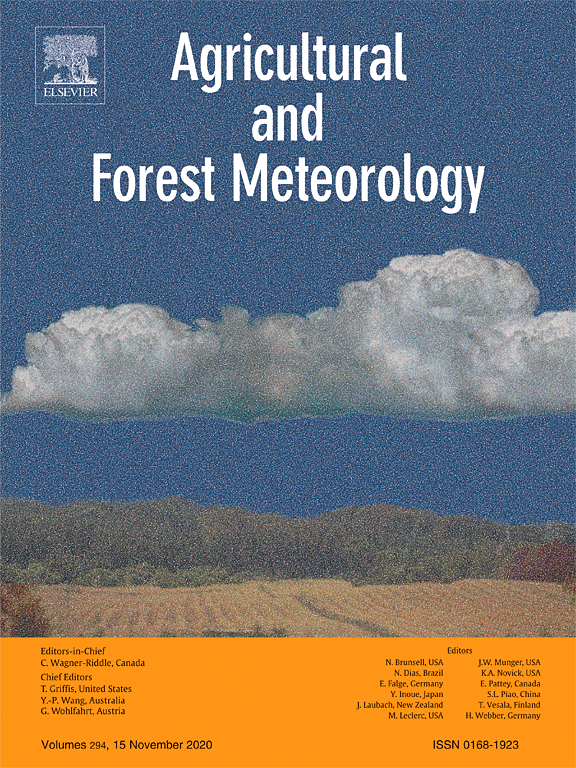Ver ítem
- xmlui.general.dspace_homeCentros Regionales y EEAsCentro Regional Mendoza - San JuanEEA MendozaArtículos científicosxmlui.ArtifactBrowser.ItemViewer.trail
- Inicio
- Centros Regionales y EEAs
- Centro Regional Mendoza - San Juan
- EEA Mendoza
- Artículos científicos
- Ver ítem
High temperature during the budswell phase of grapevines increases shoot water transport capacity
Resumen
Knowledge about heat acclimation in perennial plants is limited. Our hypotheses were (i) that high temperature during budswell before budbreak elicits acclimation in grapevines that is mediated by greater water transport capacity, and (ii) that water deficit modulates acclimation to high temperature. We compared field grown Malbec grapevines heated before budbreak during 3 or 15 days with untreated controls. We also combined these thermal regimes with two
[ver mas...]
Knowledge about heat acclimation in perennial plants is limited. Our hypotheses were (i) that high temperature during budswell before budbreak elicits acclimation in grapevines that is mediated by greater water transport capacity, and (ii) that water deficit modulates acclimation to high temperature. We compared field grown Malbec grapevines heated before budbreak during 3 or 15 days with untreated controls. We also combined these thermal regimes with two water regimes, well-watered and water deficit. The heat treatment was applied to vines enclosed in individual chambers. Under well-watered conditions, 3 days of heating during budswell were enough to increase number and diameter of primary xylem vessels in the emerging shoots, leaf stomatal density, transpiration, CO2 assimilation, shoot hydraulic conductance, specific shoot hydraulic conductivity, rates of shoot growth, leaf and lateral shoot appearance. Water deficit, while influencing xylem architecture, before budbreak did not alter the temperature effects on the water transport capacity. In vines with water deficit before budbreak, shoot hydraulic conductance was correlated with primary vessel number and total area of vessels, while in well-watered vines, with vessel size and total area of vessels. Irrigation practices need to manage this tradeoff between adaptation to elevated temperature and increased risk of hydraulic failure in plants with more and larger xylem vessels.
[Cerrar]

Autor
Galat Giorgi, Mirta Eugenia;
Keller, Markus;
Sadras, Victor Oscar;
Roig Junent, Fidel Alejandro;
Perez Peña, Jorge Esteban;
Fuente
Agricultural and Forest Meteorology 295 : 108173 (December 2020)
Fecha
2020-09
Editorial
Elsevier
ISSN
0168-1923
Formato
pdf
Tipo de documento
artículo
Palabras Claves
Derechos de acceso
Restringido
 Excepto donde se diga explicitamente, este item se publica bajo la siguiente descripción: Creative Commons Attribution-NonCommercial-ShareAlike 2.5 Unported (CC BY-NC-SA 2.5)
Excepto donde se diga explicitamente, este item se publica bajo la siguiente descripción: Creative Commons Attribution-NonCommercial-ShareAlike 2.5 Unported (CC BY-NC-SA 2.5)

